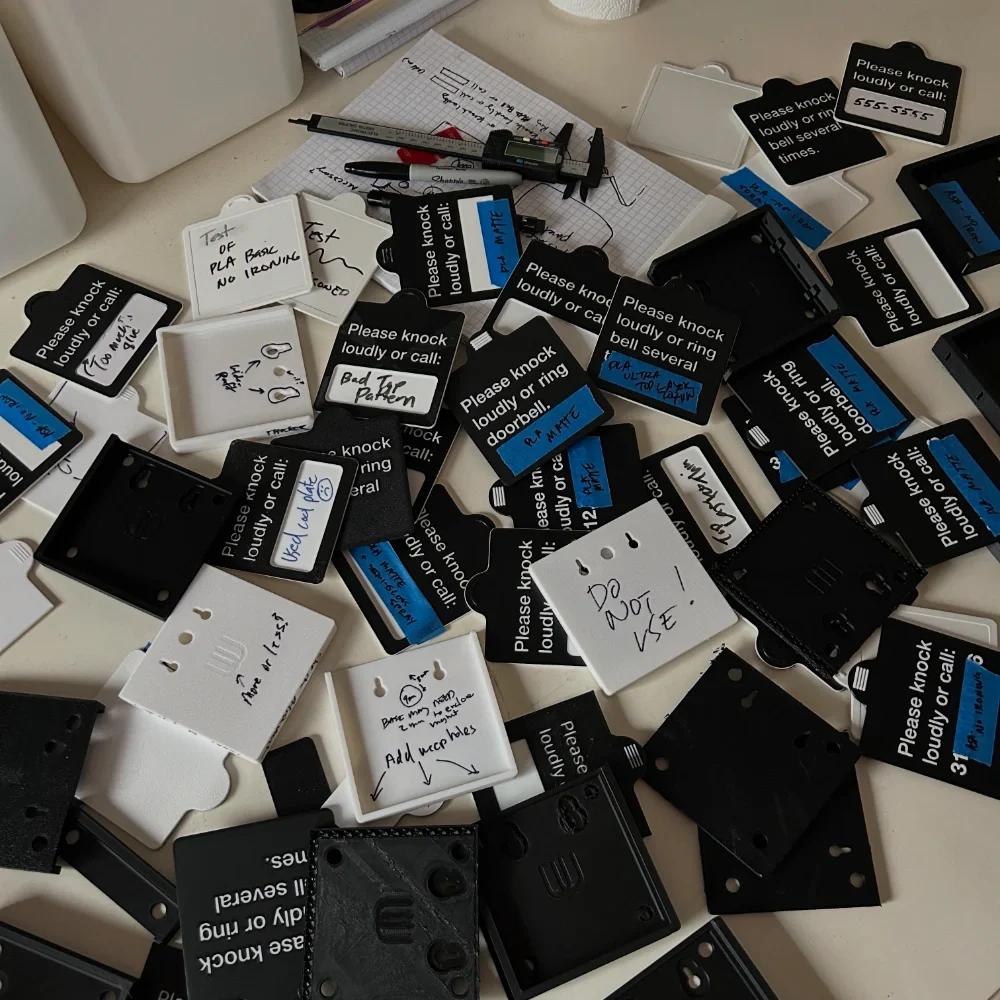Prototypes, Boundaries, and Fear
Several prototyp iterations of the Clear-Cue Signage System™
An idea is abstract. A prototype is real. It's the moment an assumption becomes something we can hold, see, or touch. We build prototypes to make an idea's affordances tangible—to discover if an object's design clearly communicates its use. Does the handle look like it should be pulled? Does the button feel like it should be clicked? A prototype answers these questions. This remains true whether we shape a physical object, like an easy-to-open medication bottle, or sketch the flow of a new website. A sketch speaks vaguely. A prototype invites interaction.
“It can be up to 100 times more expensive to fix a design or development error in a “live” product than it would be to fix that same error during the design phase.”
A prototype ends abstract debates. It becomes a boundary object, a single, shared reality for the entire team. Designers, engineers, and marketers can all point to the same object, the same screen, and finally agree on the work to be done. It creates a shared understanding for everyone, lowering our risk and avoiding the cost of a bad guess.
A prototype can exist as a quick paper mock-up. It can be a fully coded interface. Yet, we often fall into a trap: we focus on appearances. We over-design. The Aesthetic-Usability Effect demonstrates how our brains are wired to believe that what is beautiful must also be easy to use, whether it's true or not. A polished prototype looks successful and credible, much like a sharp suit or stylish hotel lobby.
But this focus is dangerous. We risk mistaking the attractive surface for the underlying experience. A simple mock-up will always lose a beauty contest against a slick one. However, a prototype’s purpose isn't to be beautiful; its purpose is to test the function and feel, free from distractions.
“Companies effectively using prototyping and other UX design methods can reduce development timelines by 30-50%.”
Prototyping is a cycle, not a single event. We build, we test, we learn, and we repeat – the "Build-Measure-Learn" loop. We build the prototype. We test it with real people to measure what works. We learn from what we see, and we repeat the cycle. It forces us to listen, to watch, and to adapt. A failure in a prototype does not set up back; it simply points to a better solution.
We can test anything, be it a cocktail napkin or a complex behavior. A prototype is "good enough" for testing when it can teach us something new.
The biggest barrier to this work is not cost. It is fear. We fear that testing will expose our mistakes, displace our authority, or threaten our creativity. This reflects a false assumption. Testing reveals the strengths and weaknesses of the product, not the people who made it. We must be willing to design with users, not just for them. When we embrace tangible feedback, we move beyond making functional objects. We begin to create experiences that genuinely improve lives.


